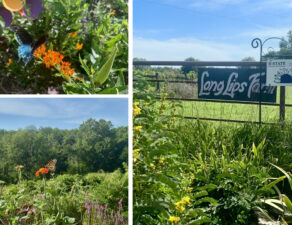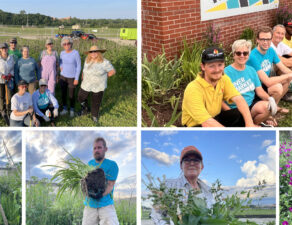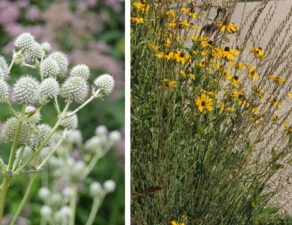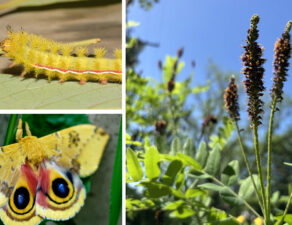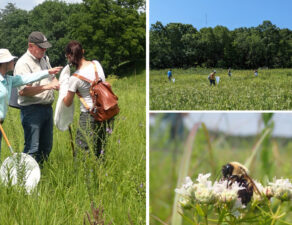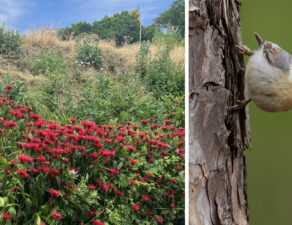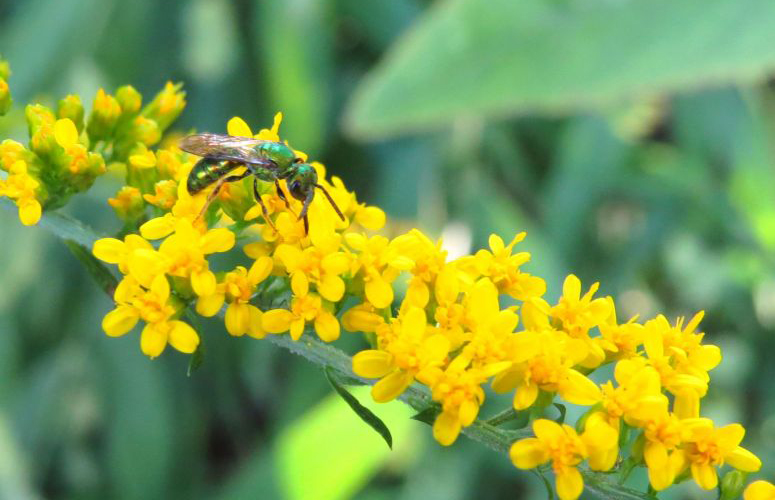
Text and Photos by Tom Schroeder
We grow native plants for their beauty but also to observe the fascinating creatures visiting them. Visiting our flowers this summer are the green gems of the native bee world, the Metallic Green Sweat Bees. These harmless, eighth to half inch size, bees live out their entire lives in your yard and need your help to survive. They provide not only pollenating services but beauty and interest in the garden.

Two Sizes of Green Sweat Bee on Rattlesnake Master
There are several different types of Green Sweat Bees. Their differences are subtle and the species are hard to tell apart. They all nest in the ground except for one that likes rotten wood for its nest. They emerge as early as April but the majority of species show up July through October. Did you know you probably walk across developing sweat bees every time you walk across the lawn?
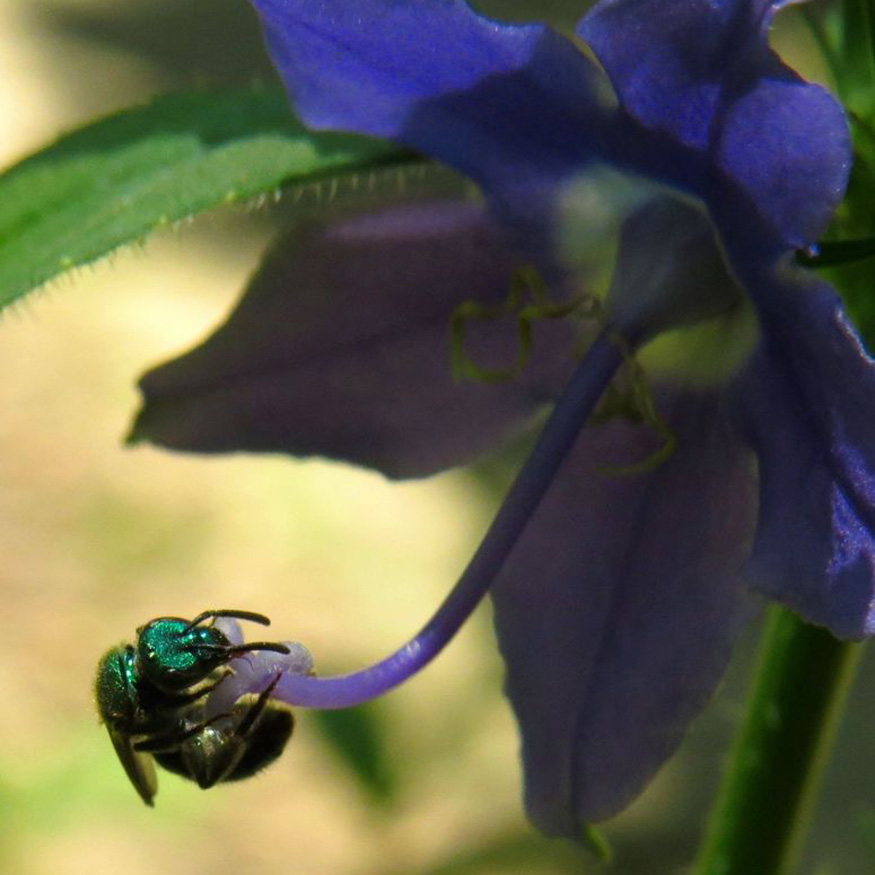
Augochlorella on Campanula (Bellflower)
Green Sweat Bees live an interesting life cycle in your yard and garden. The hard-working female bee seeks out bare dirt patches in a yard or garden and digs a 12 to 18 inch tunnel. It looks like a little ant nest. She lines the sides of it with secretions from her body which makes it water resistant and cuts down on fungal growth. She then makes 7 to 20 foraging trips, visiting hundreds of flowers, to gather enough pollen to provision one egg. She packs the pollen into a little mound called a “bee loaf” and lays one egg on it. After that she seals off the egg cell and repeats the foraging, forming another bee loaf and lays another egg. She will repeat this process to lay up to 12 eggs. Then she seals off the tunnel. The eggs hatch underground after a few days. The larva feed on the pollen and develop through 5 stages until they become a pupa. The pupa forms a primitive cocoon and then rests underground until the next spring when it develops into an adult and emerges to repeat the cycle. The adults we see visiting flowers only live 6 to 8 weeks. The rest of their life is spent underground in the nest.

Male and Female sweat bees on Woodland Sunflower
To a little Metallic Green Sweat Bee your yard is like Yellowstone National Park. Their whole life is lived in a 200-foot circle. They can live in your yard generation after generation. They only need three things to coexist with you. They need a variety of open faced native plant flowers that bloom from April to November, bare dirt for nesting sites and no pesticide exposure.
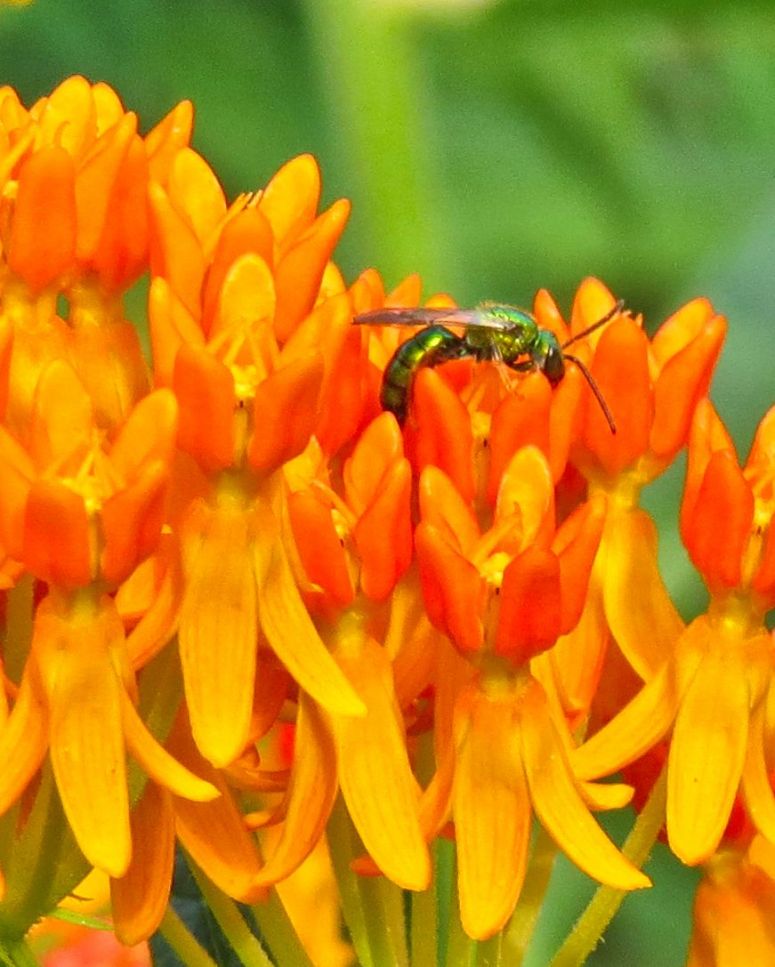
Agapostemon Sweat Bee Milkweed
The Xerces Society recommends North America natives: Annual and Perennial Sunflower, Purple Coneflower, Prairie Clover, Blazing Star, Helenium, Agastache, Rudbeckia, Goldenrod, and Aster. These bees have evolved with the local native plant species and the plants produce the nutritionally correct pollen, essential oils, and nectar the bees need. Sweat bees need bare dirt patches to nest. Consider not mulching part of your garden. Leave bare spots between turf grass in your lawn. Plant fountain grass forms like native Prairie Drop Seed and leave the dirt bare under the cascading grass. The female bees will decide the best place to build their nest tunnel. Minimize your use of pesticides. What you spray to kill the bad bugs will also kill the good bugs.
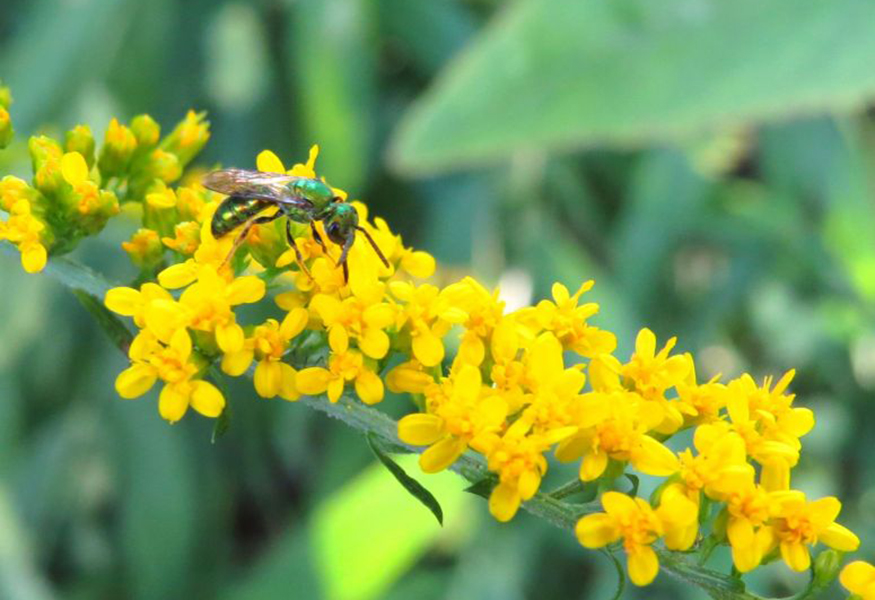
Sweat Bee on goldenrod
Native plants and Metallic Green Sweat Bees coexisted in the Kansas City area long before humans migrated here. We now need to provide them a habitat for their survival. In return, they will provide us with floral and flying emerald beauty.
